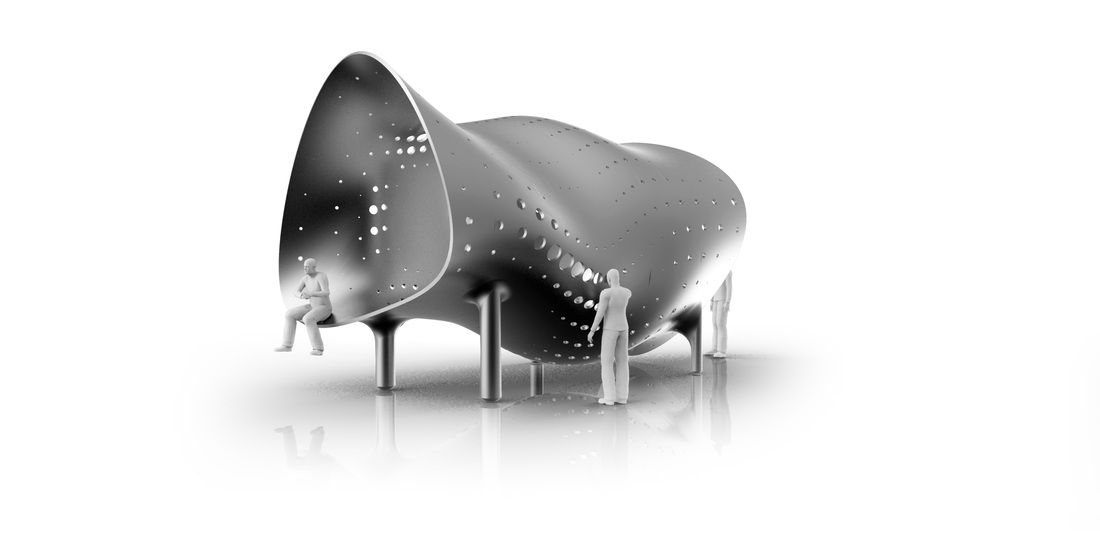Aquatic-inspired experiential architecture.
Created using Rhinoceros 3D and Grasshopper, the Sea Slug Pavilion references both the creature it’s named after and geological features of a sandstone coastline. One end of the pavilion is low and acts as an inviting entrance, allowing visitors to explore the form and peer through the small openings to view the surrounding landscape. The opposing end is elevated and acts as a viewing platform out of the pavilion.
Computational Design.
There are openings in all directions, referencing small rock pools underfoot and pits in the overhanging surfaces of cliffs by the shore. Similar to the movements of the ocean, the tunnel-like shape fluidly twists and morphs, providing the audience with a dynamic visual landscape. Simple stilts allow the design to be easily transported and installed across various locations, gradients and surface finishes.


